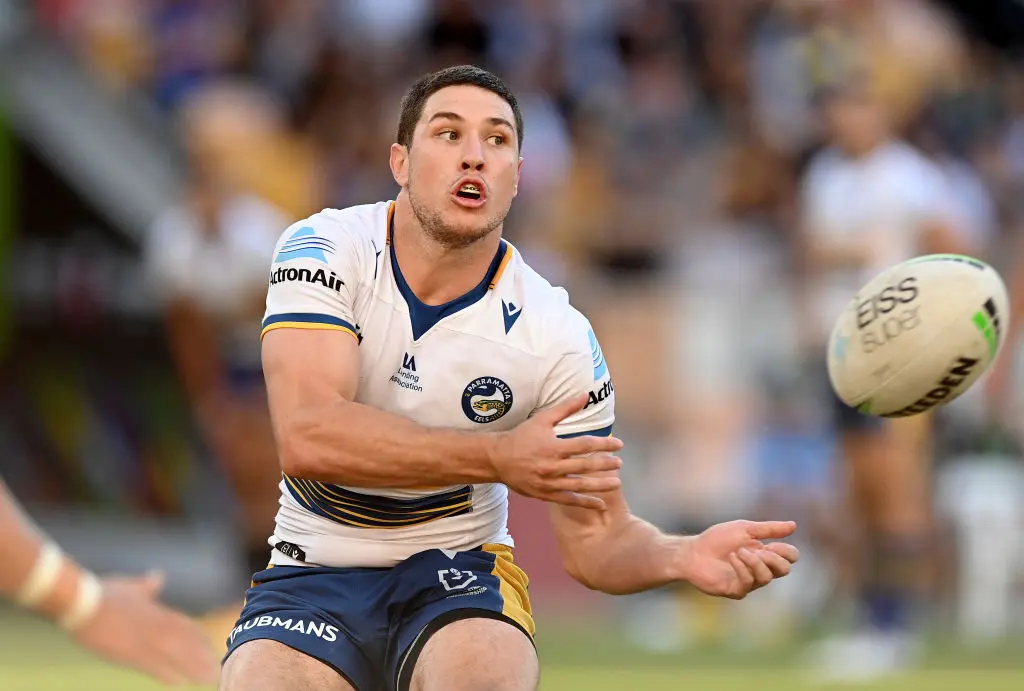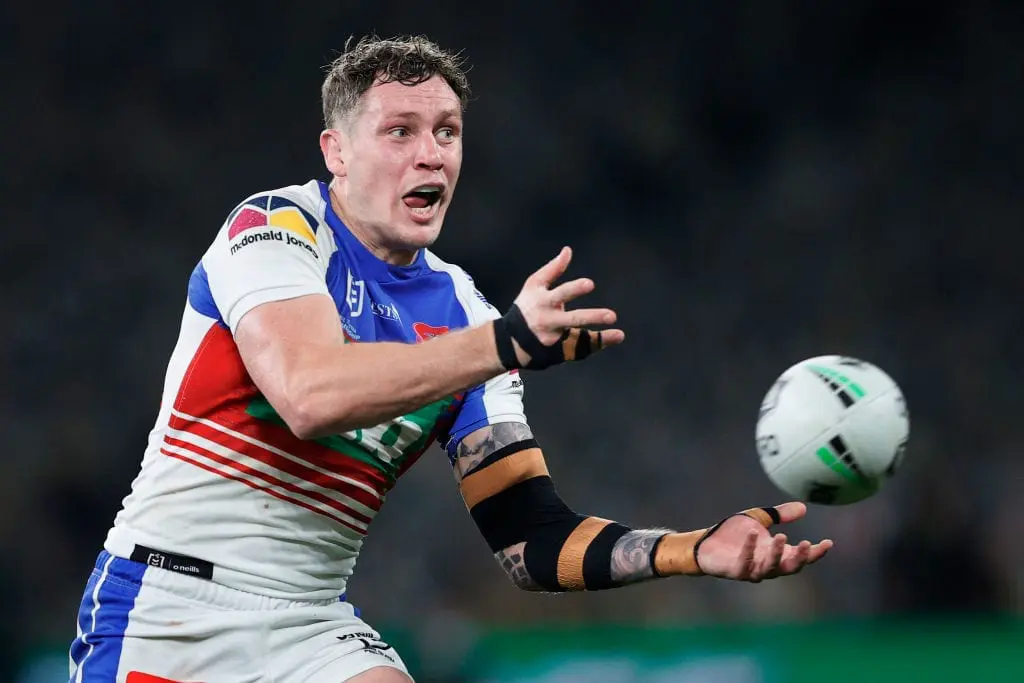The NRL is set to trial new technology in hope of eliminating misjudged forward passes this pre-season in what will be music to the ears of league fans across the nation.
Despite the bunker's recent introduction, forward passes have continued to go overlooked, prompting fans to call for drastic changes to how the NRL can neutralise the issue.
The league secretly implemented new technology late into the 2021 season as an initial trial, with two separate firms set to aid the league's hopes of combatting missed forward pass calls ahead of the NRL's opening round next month.
According to The Sydney Morning Herald, UK firm Sportable have implemented microchips into balls to read whether passes are thrown forward, while another unnamed group have also been invited to experiment with their own ball-tracking technology.

Pre-season matches and the NRLW season will see the technology come into play but won't effect matches, with the ARL still required to decide whether the ball-tracking additions will be used throughout the NRL's home and away season.
The NRL are set to assess the capabilities of both avenues in the hope either are advantageous to the league.
“We have been quietly working on different types of technology with a couple of companies for the past 12 months or so,” NRL’s head of football Graham Annesley said, via The Sydney Morning Herald.
“It’s not an easy solution due to the physics of the forward pass rule and the location of cameras at venues.
“We’ve been exploring two very different possible solutions and we trialled one of them behind the scenes in a number of games late last year.
“The alternate proposal will also be blind tested in several pre-season matches over the next month. This will allow us to properly assess the capability and accuracy of both technologies against each other.
“After the trials we will discuss the results with the Commission and seek further direction on next steps.

“While I’m not sure of the outcome at this stage, the potential to finally crack one of the great frustrations of our game is very exciting.”
Should the NRL see startling results from ball-tracking, the ARL could implement the assistance for Round 1, however 2023 is seen as a more likely timeline should any questions arise in the coming weeks.







I looked at the actual words in the SMH. They are:
“One of the companies is the London-based Sportable, which proposes to insert a microchip into the Steeden to find out whether or not the ball leaves a gamers’ fingers forwards or backwards. Another agency, which needs to stay nameless for now, will use monitoring applied sciences to make the decision.”
Sounds quite bizarre to refer to a player as a “gamer”, but we’ll let that pass. We should also be kind and ignore “monitoring applied sciences”. They might just as well have said “technology” or “mathematics” for all the information imparted by that description.
(Don’t you sometimes wish that we lived in a world where newspapers could afford to employ old-style sub-editors, to ensure such rubbish never made it into print ?)
I have two questions for Mr Annesley at the NRL.
FIRST. What will the technologies attempt to measure?
Consider: I am running directly up the field (from one set of posts towards the other set). If I pass the ball at right angles to my body, the ball will move forward, relative to the ground, because it still has forward momentum. Because it continues forward, and was not passed backwards, WITH RESPECT TO MY BODY, then it should be considered a forward pass. What will the technology be expected to call?
Consider: I am running directly up the field again, and a pass the ball slightly backwards with respect to my body. It will still move forward relative to the ground because it still has forward momentum. It WAS passed backwards with respect to my body, so it should NOT be considered a forward pass. What will the technology be expected to call?
Consider: I am running directly up field again. I wheel to the right and pass the ball slightly behind me to the left. It will go a mile forward with respect to the ground (even thought it went out of my fingers backwards, with respect to my body). What will the technology be expected to call?
SECOND
Against what technology or practice or standards will the comparison be made? Seriously, during the chosen evaluation matches, is the NRL intending to review every single pass, using whatever cameras are available, and determine whether the technology is “working” or not? And when there are no decent camera angles, how will the decide?
That is going to be important if there is a contest between two companies. How is the NRL going to choose which is the better, and how will it convince the fans that this is worth paying for?
I’m worried that we will be buying another bunker – expensive technology which can fail to pick up the most egregious violations of the rules.